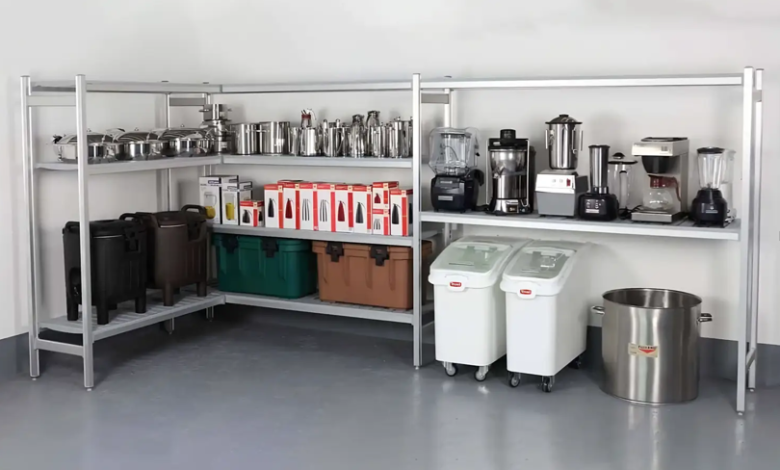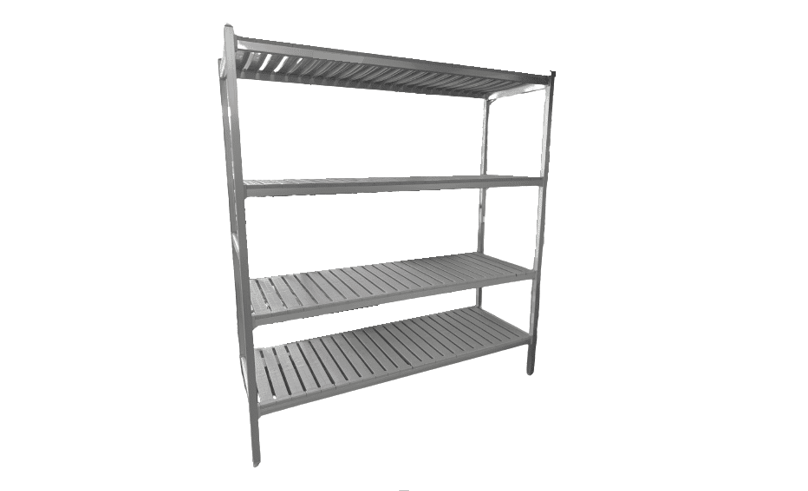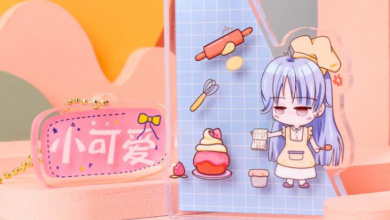Designing the Perfect Coolroom: What to Look for in a Reliable Coolroom Shelf

Every coolroom depends on structure, airflow, and hygiene to operate efficiently. Shelving sits at the heart of it all. A reliable shelving system supports storage capacity, keeps products organised, and maintains consistent cooling throughout the space. Many operational issues in coolrooms begin not with refrigeration but with poor storage design.
Shelves that rust, block airflow, or trap moisture can cause temperature fluctuations and contamination. In contrast, strong and hygienic shelving makes daily operations smoother and safer. Selecting the right coolroom shelving ensures compliance with food safety standards while supporting productivity in industries that rely on cold storage.
Before diving into what materials or types to buy, it’s important to see shelving as part of a complete system, not just a piece of hardware. The right setup controls temperature uniformity, reduces cleaning time, and extends the lifespan of stored goods.
Durability and Material Selection
A coolroom shelf works in one of the most demanding environments in any business. It deals with moisture, low temperatures, and heavy loads every day. Choosing materials that can handle those pressures prevents early failure and unnecessary maintenance costs.
Below is a quick comparison of common coolroom shelving materials:
| Material | Key Benefits | Limitations | Ideal For |
| Stainless Steel | Corrosion-resistant, easy to clean, long lifespan | Heavier and more expensive than alternatives | Food storage, laboratories, pharmaceuticals |
| Galvanised Steel | Strong and affordable | Can corrode if coating wears off | Retail coolrooms, general storage |
| Polymer-Coated Steel | Combines strength and protection, resistant to rust | Coating may chip over time | Restaurants, cafes, supermarkets |
| Aluminium | Lightweight and resistant to corrosion | Less durable for very heavy loads | Portable or adjustable shelving units |
Each option has its place. Stainless steel remains the premium choice for hygiene and durability, though polymer-coated steel offers a balance between cost and performance. The right decision depends on budget, product type, and environmental factors like humidity and temperature variation.
Maintenance also plays a role. Materials with fewer joints and smoother surfaces accumulate less dirt and bacteria. In industries like food processing or pharmaceuticals, that can be the difference between compliance and costly penalties.
Weight Capacity and Load Distribution
Every shelf has a limit, and exceeding it risks more than just a bent frame. Overloading affects how air circulates, leading to uneven temperatures and potential spoilage. Planning for load capacity ensures both safety and consistent performance.
Most commercial coolroom shelves are rated between 150 to 500 kilograms per shelf, depending on the width and material. Heavy-duty systems can handle more, but over-specifying adds unnecessary cost if not required. The goal is balance: strength without waste.
To distribute loads effectively:
- Place heavier items on lower shelves to stabilise the structure.
- Avoid stacking products tightly against walls. Leave small gaps for air movement.
- Rotate stock regularly to prevent long-term pressure on the same areas.
- Use adjustable shelving brackets to reposition shelves as stock changes.
Consistent airflow is key. A single blocked vent or overloaded bay can lead to uneven cooling. Good shelf design makes temperature control easier without constant manual adjustment.
Hygiene and Ease of Cleaning
Cleanliness is non-negotiable inside any coolroom. Every component, from the floor to the shelving, must support hygiene. A shelf that’s easy to clean saves time and reduces contamination risk.
Here’s what defines hygienic shelving in a coolroom setting:
- Smooth, non-porous surfaces: Prevent bacteria and mould from embedding.
- Open or slatted designs: Allow air to circulate freely and let liquid drain away.
- Tool-free removal: Simplifies deep cleaning during shutdowns or inspections.
- Corrosion resistance: Eliminates rust, which can flake and contaminate stored goods.
Food safety audits often focus on how easily equipment can be sanitised. Polymer and stainless steel shelves perform best here, as they can be wiped down or pressure-cleaned without damage. Avoid materials that absorb moisture or require harsh chemicals to maintain.
In multi-use environments, where raw and prepared foods share storage, cleaning efficiency also prevents cross-contamination. Removable shelf inserts can make compliance simpler, as they can be sanitised individually between uses.
Modularity and Space Efficiency

Coolrooms rarely stay the same size or layout forever. Businesses evolve, storage needs expand, and product types change. Modular shelving systems make it easier to adapt without replacing entire setups.
A modular design means shelves can be rearranged, added, or removed with minimal effort. Adjustable uprights allow different shelf heights, making it easy to accommodate both bulk boxes and smaller containers. For growing businesses, that flexibility can delay costly expansions.
Below are some common modular features worth considering:
- Adjustable height brackets to accommodate mixed product sizes.
- Clip-in shelf systems that remove the need for specialised tools.
- Corner connectors that make better use of limited space.
- Add-on bays to extend existing shelving runs as storage needs grow.
In tight coolrooms, space efficiency becomes as important as insulation. Every centimetre counts. Good shelf planning maintains easy access while keeping walkways clear and safe. A modular system also helps maintain airflow patterns, preventing hotspots where cooling is inconsistent.
The best setups balance vertical and horizontal space. Using taller units with multiple levels increases capacity without expanding floor area. Still, clearances above and around each shelf must remain adequate to let cold air circulate.
Temperature and Airflow Considerations
Temperature uniformity defines a successful coolroom. Poor airflow can lead to warm pockets, causing certain products to spoil faster than others. The right shelving design prevents this.
A common mistake is placing shelves flush against the wall. That blocks airflow and traps condensation. Leaving at least 50 millimetres of clearance allows air to move behind and between units. Similarly, avoid stacking boxes so tightly that they restrict vertical air movement.
Best practices for airflow include:
- Positioning shelves parallel to airflow patterns from the evaporator fan.
- Using perforated or slatted shelves for better distribution.
- Leaving space between the top shelf and ceiling for air return flow.
- Avoiding the placement of solid panels that obstruct cold air circulation.
Condensation control also depends on airflow. When air moves freely, moisture evaporates instead of pooling. This helps protect both the shelf structure and the products it supports.
Airflow-aware shelf placement may seem like a small detail, but it’s one of the biggest contributors to consistent cooling and lower energy use. A well-designed shelving plan often allows the refrigeration system to run more efficiently, saving both energy and cost over time.
Compliance and Safety Standards
Every coolroom shelf must do more than just hold weight. It has to meet the right standards for safety and hygiene. In Australia, many coolroom components need to align with HACCP guidelines and Australian Standards (AS) for food handling and storage. Compliance is not just a legal requirement; it’s an assurance that the system will hold up under daily use.
The main considerations include:
- Load Signage: Each unit should clearly show its maximum load capacity to prevent overstocking.
- Shelf Stability: Frames should include anti-tip features or wall anchors, especially for tall or heavy configurations.
- Hygienic Design: Welded joints, smooth corners, and minimal crevices reduce contamination risks.
- Fire Safety and Materials: Non-flammable or low-smoke materials are recommended, particularly for large commercial coolrooms.
Regular safety checks are just as important as the initial purchase. A compliant product still needs to be inspected for rust, wobble, or damage that could compromise safety. Recording maintenance activities and inspections can also protect a business during audits or insurance claims.
In sectors like food retail, pharmaceuticals, and logistics, compliance builds trust. Suppliers who understand the standards simplify the process, saving you time and effort when it matters most.
See also: Average Cost of SEO for Small Businesses in 2025: What to Expect in Australia
Maintenance, Lifespan, and Replacement Indicators
Every piece of equipment wears over time. Coolroom shelving is no exception. Routine maintenance keeps systems performing at their best and prevents costly downtime. The key lies in recognising early warning signs before they turn into bigger problems.
Common signs that shelving needs attention include:
- Visible rust or corrosion on joints or frames.
- Shelves starting to sag under normal weight loads.
- Loose or uneven brackets.
- Cracked or peeling coating layers.
Regular cleaning helps slow deterioration. It’s good practice to remove and sanitise shelf panels during scheduled maintenance days. For polymer-coated or galvanised steel, re-coating or replacing damaged sections prevents rust spread. Stainless steel often lasts longest but still benefits from wiping down to remove residue or condensation build-up.
Shelf lifespan varies depending on use, environment, and material quality. In heavy-use commercial coolrooms, replacement may be required every 5 to 10 years, while high-quality stainless steel units can last well over a decade. When replacements happen gradually, businesses can maintain operations without full shutdowns.
Maintenance logs not only track lifespan but also demonstrate compliance during inspections. A well-kept record shows commitment to hygiene and operational safety, two elements every auditor looks for.
Why Reliable Shelving Suppliers Matter
Choosing the right supplier makes a bigger difference than most realise. Reliable shelving is not just about the product itself; it’s about how well it fits the space, supports operations, and lasts under pressure. An experienced supplier ensures that every measurement, fitting, and accessory aligns with the specific conditions of your coolroom.
Working with specialists like Mills Shelving provides confidence that your system will perform consistently under Australian conditions. Their coolroom shelving range is designed for durability, hygiene, and modular efficiency, making it suitable for supermarkets, restaurants, warehouses, and pharmaceutical storage.
A reliable supplier also helps with:
- Accurate load planning: Ensuring your layout meets safety and airflow requirements.
- Custom fit-outs: Providing tailored configurations to suit available floor space.
- After-sales support: Offering replacement parts, installation advice, and ongoing maintenance recommendations.
- Compliance assistance: Guiding you through standards for food safety and occupational health.
When a supplier understands the full operating context of your business, they can anticipate potential challenges. That partnership often proves more valuable than the initial purchase price, as it ensures long-term reliability and efficiency.
Are Your Coolroom Shelves Working as Hard as You Are?
A coolroom is only as good as its weakest component. Shelving plays a larger role in performance than most realise. Strong, hygienic, and properly designed shelves keep temperatures stable, products safe, and workers efficient.
The right combination of material, structure, and supplier forms the foundation of a dependable cold storage system. For businesses that rely on consistent refrigeration — from supermarkets to laboratories — neglecting shelf quality can quickly lead to bigger operational costs.
Now is a good time to inspect your current setup. If corrosion, poor airflow, or outdated configurations are slowing you down, upgrading your shelving could deliver an immediate improvement in both hygiene and efficiency.
The ideal coolroom design starts with attention to detail, and it’s the shelving that often sets the standard for everything else.



